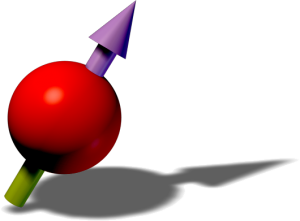
With colleagues from LNGS and Gran Sasso Science Institute (L’Aquila, Italy), we show that rotating dipolar quantum gases in the supersolid phase can serve as a versatile analogues of neutron stars effectively emulating their behaviour during a glitch, an occasional abrupt speed up of a highly magnetic neutron star’s rotation frequency, followed by a slow relaxation. In rotating neutron stars, glitches are believed to occur when many superfluid vortices unpin from the interior, transferring angular momentum to the stellar surface. In the supersolid analogy, we show that a glitch happens when vortices pinned in the low-density inter-droplet region abruptly unpin. We show that dipolar supersolids offer an unprecedented possibility to test both the vortex and crystal dynamics during glitches events and they provide a tool to study glitches originating from different radial depths of a neutron star. Benchmarking our theory against neutron star observations, these results will open a new avenue for the quantum simulation of stellar objects from Earth.
See the paper here: Phys. Rev. Lett., arXiv:2306.09698
 For German speakers: in this month’s edition of ‘Sterne und Weltraum’ of Spektrum magazine, you will find an article about the links between glitches in supersolids and in neutron stars, written by our very own Elena Poli, Thomas Bland, Manfred Mark, and Francesca Ferlaino, alongside frequent collaborator, Massimo Mannarelli.
For German speakers: in this month’s edition of ‘Sterne und Weltraum’ of Spektrum magazine, you will find an article about the links between glitches in supersolids and in neutron stars, written by our very own Elena Poli, Thomas Bland, Manfred Mark, and Francesca Ferlaino, alongside frequent collaborator, Massimo Mannarelli.


 If you have been searching for a high-level overview of the dipolar supersolid phase, look no further than this open access article by
If you have been searching for a high-level overview of the dipolar supersolid phase, look no further than this open access article by 
